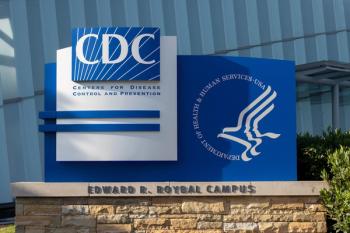
Glucose self-monitoring unnecessary in non-insulin treated diabetics
A lack of improvement in HbA1c compared with patients who monitor glucose indicates that monitoring should not be routine, according to new research.
Self-monitoring of blood glucose (SMBG) may be unnecessary in patients with non-insulin-treated type 2 diabetes, according to the results of a Monitor trial published in JAMA Internal Medicine.
The open-label trial showed no clinically or statistically significant difference in glycemic control at one year in patients who performed SMBG measurements and those who did not. In addition, a group that performed SMBG with tailored feedback messaging had no benefits compared with no SMBG.
“Patients and providers have to consider each unique situation as they determine whether home blood glucose monitoring is appropriate,” researcher Katrina Donahue, MD, MPH, senior distinguished professor at the University of North Carolina at Chapel Hill, told Medical Economics. “However, the study’s results suggest that self-monitoring of blood glucose in non-insulin treated type 2 diabetes has limited utility.”
According to Donahue, for patients with type 2 diabetes being treated with insulin, checking blood glucose at home is an accepted practice for monitoring the effects of insulin therapy. However, the majority of patients with type 2 diabetes are not treated with insulin, she said.
“These patients, too, are often recommended glucose monitoring, despite an ongoing debate about its effectiveness in controlling diabetes or improving how patients feel,” Donahue said. “Currently, 75% percent of non-insulin treated type 2 diabetes patients perform regular blood glucose testing at home, generally at the recommendation of a provider.”
The trial was designed to compare three approaches of SMBG for their effects of HbA1c and health-related quality of life (HRQOL) among people with type 2 diabetes that do not require insulin treatment. The trial was conducted in 15 primary care practices in North Carolina and randomly assigned 450 patients with type 2 non-insulin-treated diabetes to either no SMBG, once-daily SMBG, or once-daily SMBG with enhanced patient feedback. All patients were aged 30 or older and had an HbA1c higher than 6.5% but lower than 9.5%.
Of the enrolled patients 92.9% completed the final trial visit. No significant differences in HbA1c were found looking across all three trial groups. There was also no significant difference found in HRQOL between the trial arms. There were no notable differences in hypoglycemia, hospitalizations or emergency room visits, the study showed.
“All in all, home finger-stick blood tests did not prove any health advantage, even when the monitoring process was enhanced by technology,” Donahue said, adding that these results were surprising given that small past studies indicated that integrating technology might improve the efficacy of home monitoring.
“For the majority [of patients], the costs may outweigh the benefits. If patient and provider determine that home monitoring is not necessary, it could save the patient hundreds of finger sticks and hundreds of dollars every year, at least until insulin treatment is required,” Donahue said. “That said, the choice is still one that an individual must make. Some patients may feel that home monitoring helps them to feel in better control of their health-for them, the data may be useful. Some patients may question the process of home monitoring, and instead favor different approaches to managing their health.”
Newsletter
Stay informed and empowered with Medical Economics enewsletter, delivering expert insights, financial strategies, practice management tips and technology trends — tailored for today’s physicians.

















